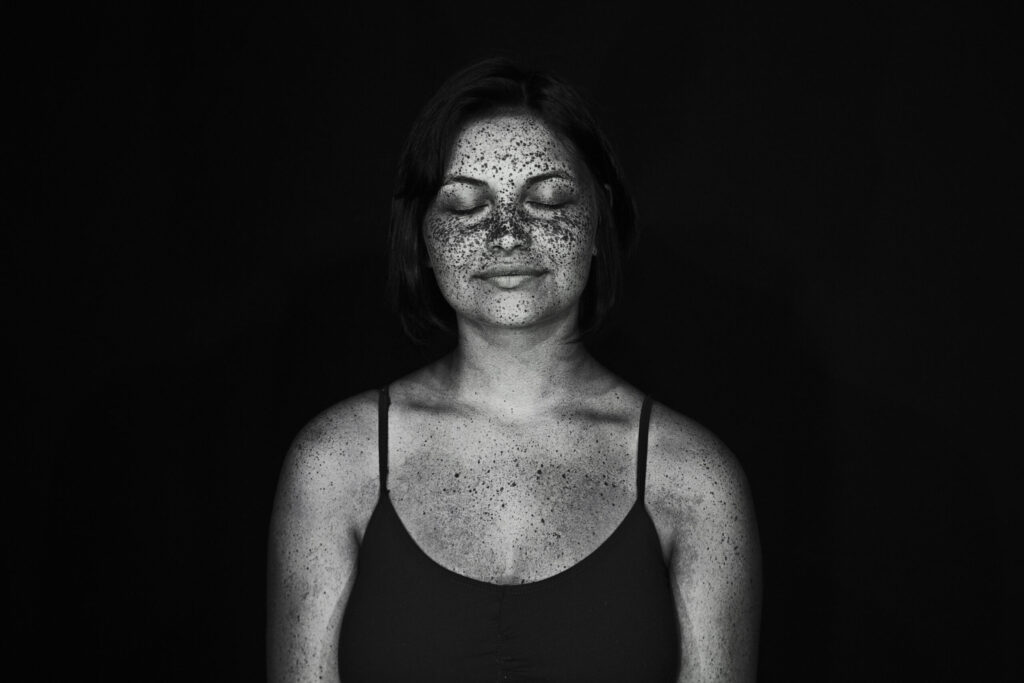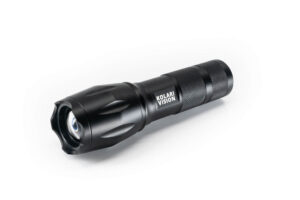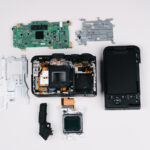Introduction to UV photography lighting solutions
Strong sunlight is the gold standard for UV photography lighting. Unfortunately, sunlight isn’t always available, and alternative lighting must be used. This article will show you several artificial UV lighting solutions for every shooting condition.
Continuous light for UV photography
UV bulb (black light):
This UV lighting solution for UV photography allows you to shoot static subjects: it offers a diffuse light with medium output intensity, implying a long time exposure. The UV bulb works well for indoor macro photography. Fluorescent black lights tend to work better than incandescent blacklights. Some of the cheap black lights we tried did not emit deep enough UV light to be useful.
Omnilux 105W 230V UV bulb Canon 6D FS + Nikon 50mm F/1.8D (macro)
F/11, 200iso, 30s
UV LED torchlight:
In addition to UV bulb, UV LED torchlight offers a concentrated light beam with strong output intensity. This UV lighting solution for UV photography is perfect to help photographers focusing on their subject once the Kolari Vision UV transmitting bandpass filter is put in front of the lens. Kolari Vision offers one on their online store here!
Safety note: UV LEDs emits pure UV light. Never watch the LED or light the eyes of your models, and always keep eyes protection (safety glasses…) when using such torchlight. Likewise, never look through a UV pass filter, particularly not at a UV light source.
Flash for UV photography
Full-Spectrum Speed Lite Flashes:
A traditional speed lite style flash bulb emits a significant amount of IR and UV light! With the correct filter glass in place, these types of flashes can be used for lighting UV photographs with great results. Our KV-FL1 flash is manufactured with this glass already in place along with IR and UV specific flash head filters, making it perfect for UV and multispectral work out of the box with no modification necessary.

Professional studio strobes for UV photography:
Professional studio strobes offer the most powerful UV lighting solution for your indoor shootings, but they are the most expensive option. Used with diffusers like a lightbox, they will give you a strong and diffuse UV light to achieve professional portraits.

You can find more articles on UV photography here.









5 Responses
hi amazing articles, do i need to convert my camera to UV before shooting even i have UV source light like changing my flash to produce UV without and blocking IR?
im new in this feild and im really interested in it
For best results, the full spectrum conversion will give you the most UV sensitivity. You can try to use the filter on some older cameras but the exposures will be very long.
Pierre-Louis,
Thank you so much for your advice. Your page has been very helpful. As per our previous correspondence, you suggested that I use an “Omnilux 105W 230V UV Bulb” to achieve optimal UV-A light for indoor photos of my Dermatology patients. Do I need 2 lights to offset any shadowing? Also, can you suggest the best “Flash Head Reflector”, or the one used in Mathieu’s UV video for the Omnilux bulb?
Kind Regards,
Geronimo
My thanks too for the helpful information. One question, however, as I am confused… Can one safely use a UV flash if the model’s eyes are unprotected (as the portraits suggest)? Perhaps it is the difference between flash and continuous light, but I’m not sure how to reconcile use of a UV flash with the warning regarding looking into a UV light source. Thanks again.
I would bounce the UV off of a wall and keep it as low power as possible.